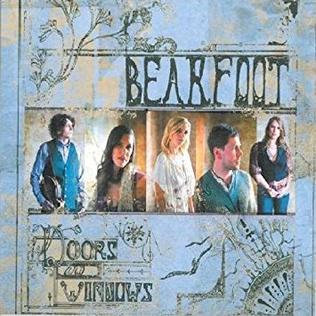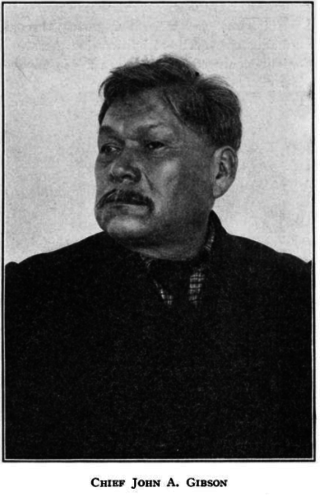
Onondaga County is a county in the U.S. state of New York. As of the 2020 census, the population was 476,516. The county seat is Syracuse. The county is part of the Central New York region of the state.

Hiawatha, also known as Ayenwatha or Aiionwatha, was a precolonial Native American leader and cofounder of the Iroquois Confederacy. He was a leader of the Onondaga people, the Mohawk people, or both. According to some accounts, he was born an Onondaga but adopted into the Mohawks.

The Onondaga people are one of the five original nations of the Haudenosaunee (Iroquois) Confederacy in the Northeastern Woodlands. Their historical homelands are in and around present-day Onondaga County, New York, south of Lake Ontario.

Onondaga Lake is located in Central New York, immediately northwest of and adjacent to Syracuse, New York. The southeastern end of the lake and the southwestern shore abut industrial areas and expressways; the northeastern shore and northwestern end border a series of parks and museums.

Six Nations is demographically the largest First Nations reserve in Canada. As of the end of 2017, it has a total of 27,276 members, 12,848 of whom live on the reserve. These nations are the Mohawk, Cayuga, Onondaga, Oneida, Seneca and Tuscarora. Some Lenape live in the territory as well.
Six Nations may refer to:
Haldimand—Norfolk—Brant was a federal electoral district in Ontario, Canada, that was represented in the House of Commons of Canada from 1997 to 2004. This riding was created in 1996 from parts of Elgin—Norfolk and Haldimand—Norfolk ridings.
First Nations in Ontario constitute many nations. Common First Nations ethnicities in the province include the Anishinaabe, Haudenosaunee, and the Cree. In southern portions of this province, there are reserves of the Mohawk, Cayuga, Onondaga, Oneida, Seneca and Tuscarora.

The Upstate Medical University Arena is a multi-purpose arena located in Syracuse, New York. It is part of the Oncenter Complex. Designed by Edgarton and Edgarton and built from 1949 through 1951, the structure is significant as an example of a World War I, World War II and Aroostook War commemorative and as "an early and sophisticated example of single-span thin-shell concrete roof construction." It was listed on the National Register of Historic Places in 1988. The Upstate Medical University Arena has been renovated twice, in 1994 and 2018.
Onondaga language is the language of the Onondaga First Nation, one of the original five constituent tribes of the League of the Iroquois (Haudenosaunee).
Ohsweken is a dispersed rural community located within the Six Nations of the Grand River, in the County of Brant, Ontario, Canada. Approximately 300 of the 2,700 homes on the reserve are in Ohsweken, and it is the site of the reserve governmental and administrative offices.

The Akwesasne Indians are Junior "B" box lacrosse team from Akwesasne. The Indians compete in the OLA Junior B Lacrosse League.
Haldimand—Norfolk—Brant was a provincial electoral district in central Ontario, Canada that elected one Member of the Legislative Assembly of Ontario. It was created in 1999 from Norfolk and Brant—Haldimand. It was abolished in 2007 into Haldimand—Norfolk and Brant.
Bearfoot was a post-bluegrass band that was formed in Alaska in 1999 as Bearfoot Bluegrass. The original all-Alaskan band competed in and won the 26th annual Telluride Bluegrass band contest in 2001, and returned the following year to perform in the Telluride Bluegrass Festival. They later changed their name to Bearfoot as their music evolved to include americana, post-bluegrass, and string instrument based pop.

Six Nations Polytechnic (SNP) is a Haudenosaunee-governed Indigenous institute on Six Nations of the Grand River First Nation. SNP is an Indigenous Institute, the third pillar of post-secondary education in Ontario, as recognized by the Indigenous Institutes Act of 2017, The Six Nations of the Grand River First Nation are the Mohawk, Cayuga, Onondaga, Oneida, Seneca, and Tuscarora. The Six Nations of the Grand River First Nation reserve acreage at present covers some 46,000 acres (190 km2) near the city of Brantford, Ontario. Six Nations Polytechnic has two campuses, one located in Ohsweken and one located in Brantford.

Doors and Windows is the fourth album by Bearfoot, released in 2009.
The Onondaga Clear Sky First Nation is an Onondaga First Nation in southern Ontario, and a member nation of the Six Nations of the Grand River. Its reserves include the shared reserves of Glebe Farm 40B and the Six Nations of the Grand River First Nation.
Glebe Farm 40B is a shared First Nations reserve within the city of Brantford. It is shared between the Bay of Quinte Mohawks, Bearfoot Onondaga, Delaware, Konadaha Seneca, Lower Cayuga, Lower Mohawk, Niharondasa Seneca, Oneida, Onondaga Clear Sky, Tuscarora, Upper Cayuga, Upper Mohawk & Walker Mohawk First Nations.

John Arthur Gibson (1850–1912) was a chief of the Seneca nation of the North American Iroquois confederation. Part Onondaga and part Seneca, he resided within the reserve of the Six Nations of the Grand River in Ontario, Canada. Knowledgeable about Iroquois (Haudosaunee) culture, he is best known for the versions he provided of the Iroquois oral constitution, the Great Law of Peace. He acted as an advisor to the Canadian Department of Indian Affairs in matters relating both to Iroquois and non-Iroquois indigenous people. He was a well-respected player of the traditional Iroquois sport of lacrosse until he was blinded during a game when he was 31.









